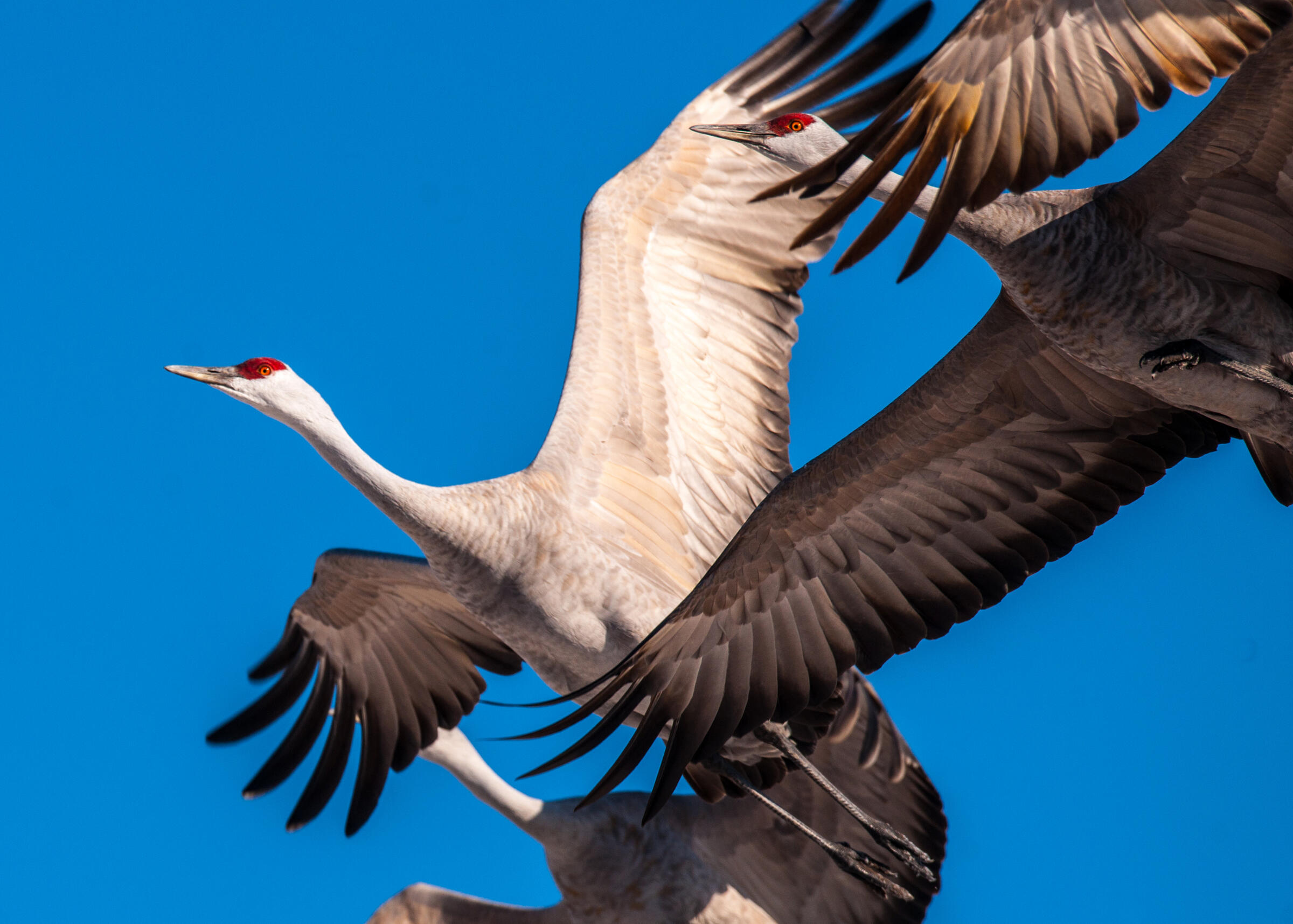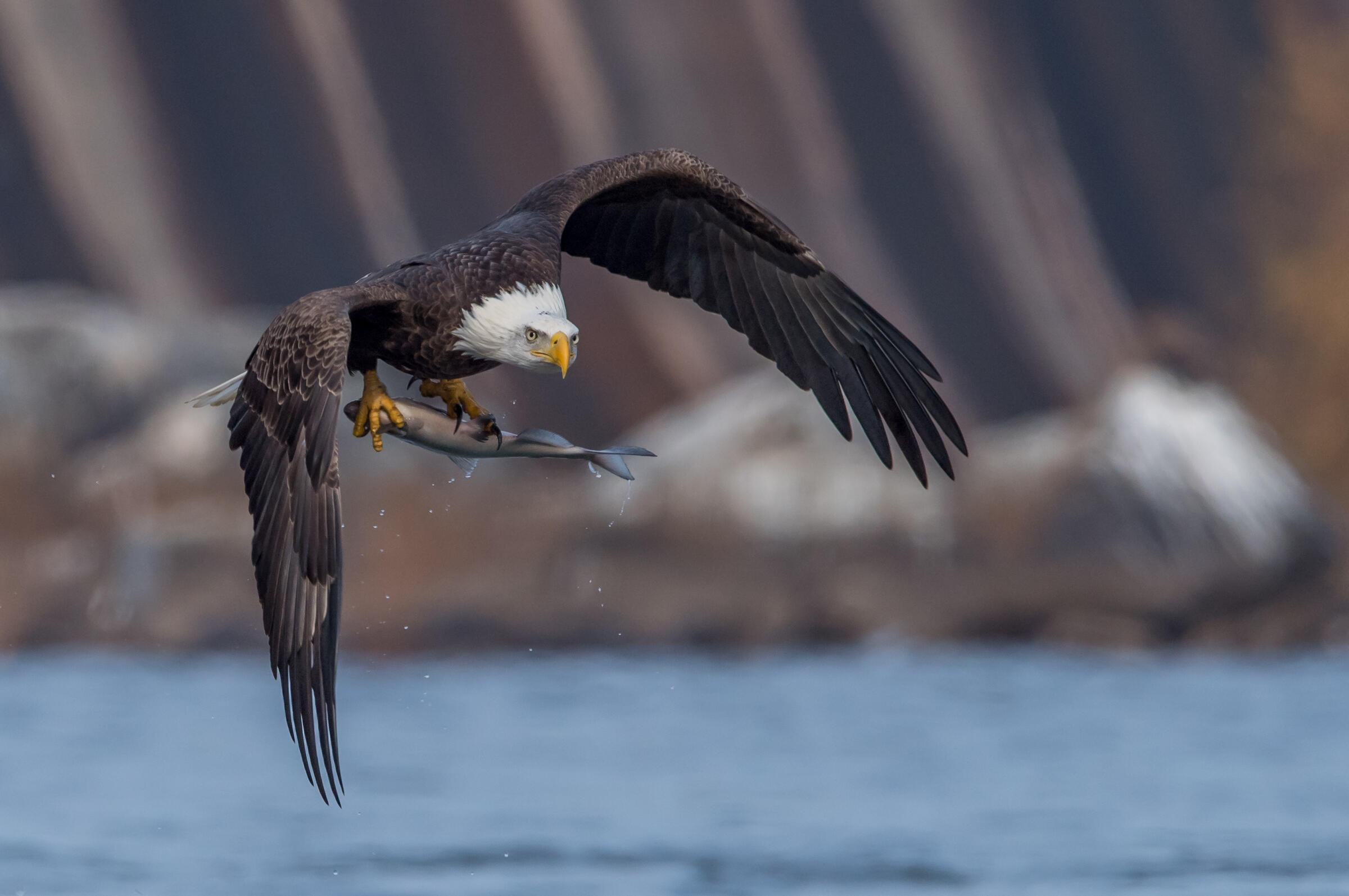Bobolink
Latin: Dolichonyx oryzivorus
Protecting birds and their habitats
Greater Prairie Chicken. Photo: Barbara Collister.
Audubon implements strategic initiatives to further the protection of all birds, with an emphasis on our most threatened birds, across Nebraska and the Dakotas, as part of the Central Flyway.
Refuge to both resident and migratory species, the Platte River provides unique habitat that supports millions of waterbirds, including Audubon priority bird species like the Whooping Crane, Sandhill Crane, Least Tern, and Piping Plover.
Providing important habitat for native birds in all communities.
Climate change is an existential threat to birds and people, and addressing this threat requires sustained, targeted action. Audubon is uniquely suited to help drive that action with our hemispheric network of staff and volunteers from all walks of life and of all political persuasions.
The vast majority of America’s grassland birds breed on private lands, working with ranchers and private landowners is our best hope for conserving them.
The Conservation Forage Program works with North Dakota's producers to establish grasslands on marginal cropland to improve forage availability and quality.
We partner with private landowners to invest in sustainable land management, providing financial and technical support for grazing infrastructure for private landowners.

Sandhill Cranes. Photo: Gary Crandall.
This is a call to action to protect birds, and in so doing, to protect ourselves. Elevate is the most ambitious fundraising endeavor in our history – $30 million+ for conservation.
The Great Plains encompasses a diversity of habitats including the Missouri River and Red River riparian forests, tallgrass prairies, wetlands in the Prairie Pothole region and of the Rainwater Basin, the Platte and Niobrara rivers, the Sandhills, Central Coteau, and the Pine Ridge areas collectively.
Developing over tens of thousands of years, tallgrass prairie found in the Great Plains region historically evolved with animals grazing and natural fires. Today, we utilize grazing management and prescribed fire as a way to support the landscape, enrich the soil, and minimize invasive species that cannot withstand the heat of fire. The dominate vegetation in the Great Plains region includes a composition of grasses, herbs, and shrubs that support wildlife forage, breeding, and nesting habitats. At one time, grasslands in various forms covered 40% of the world’s land area.
In the Great Plains, our prairies are divided into three sub-divisions. Tallgrass prairie, which covers a small area of the eastern Dakotas and Nebraska and stretches east to Illinois and Ohio. Mixed grass prairie covers the central part of the states and stretches north to south from Southern Manitoba and Saskatchewan into Texas. Shortgrass prairie starts in far western parts of our states and can stretch to the Rocky Mountains. Tallgrass and mixed grass prairies also exist in an area with adequate precipitation to support modern agriculture. Thus, significant proportions of these biomes have been cleared for use in growing food and fuel. Estimates from National Audubon Society’s North American Grasslands and Birds Report conclude that only 11% of tallgrass prairies, 21% of mixed grass prairies, and half of shortgrass prairies remain.
There are over 400 species of birds that call the Great Plains home, but an estimated 700 million birds have been lost across 31 species since 1970.

Photo: Bald Eagle. Photo: William Pully.
Feeling like you can’t make a difference? That couldn’t be further from the truth. Here’s where to begin and how to amplify your efforts to make lasting change in the world.
Help us continue our important work for Sandhill Cranes and other birds that rely on the Platte River ecosystem!
We are able to provide and protect this amazing landscape only with the help of private donations. Help us keep the trails open and the prairie thriving!
Support our work with local landowners, urban woods and prairies, and education programs in Nebraska and the Dakotas!